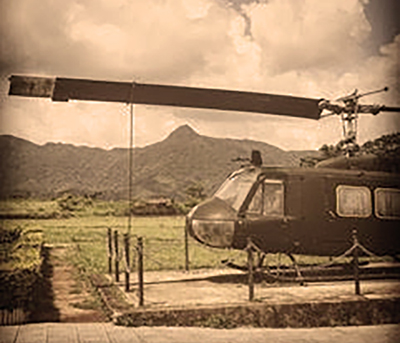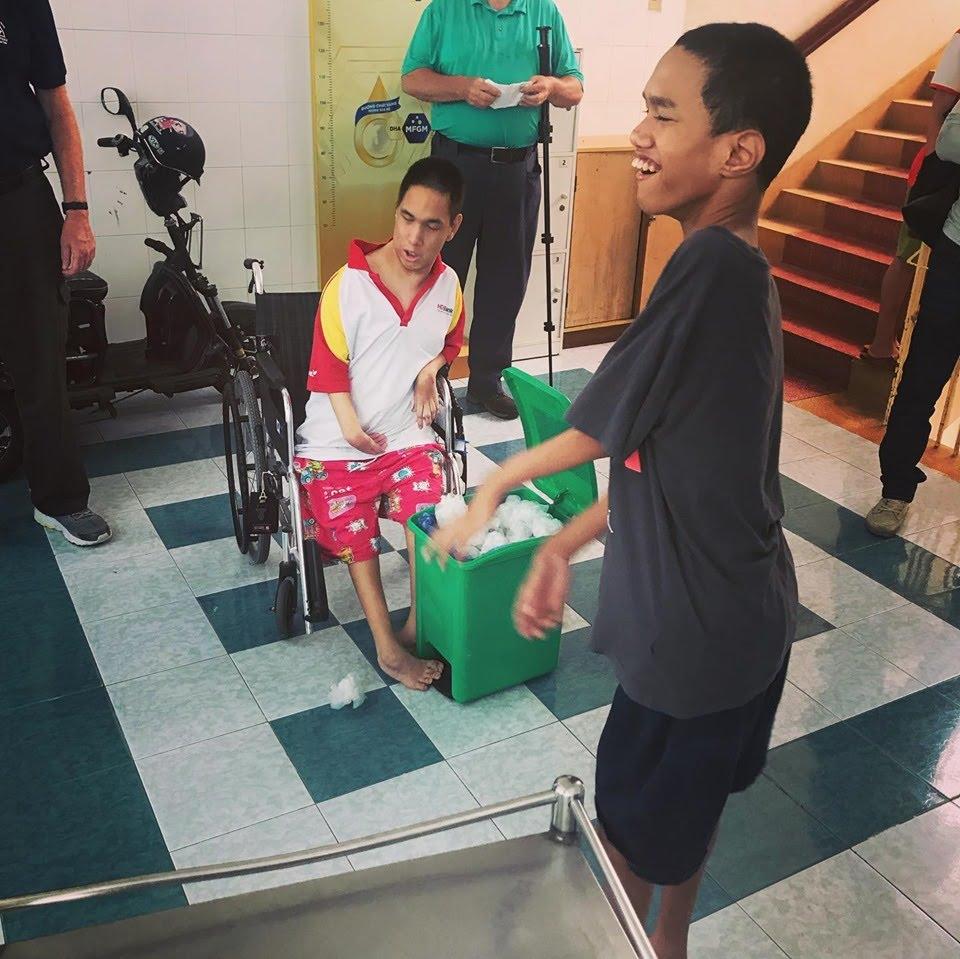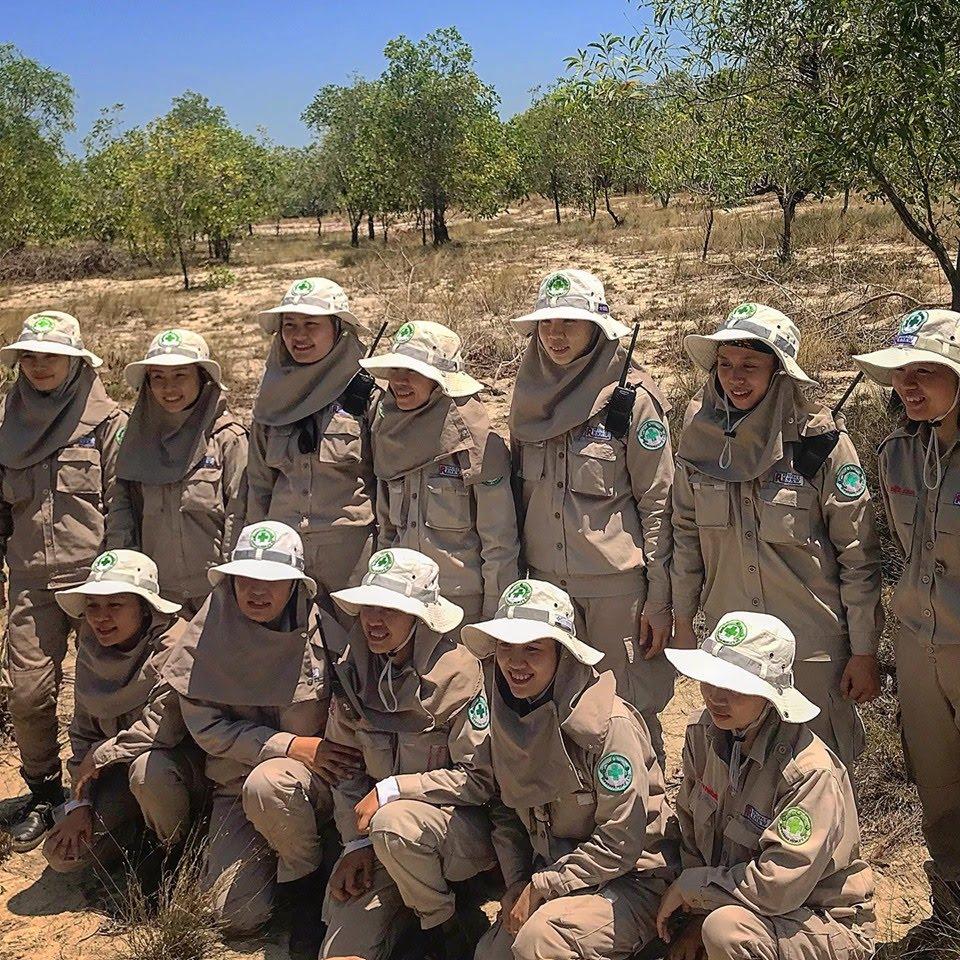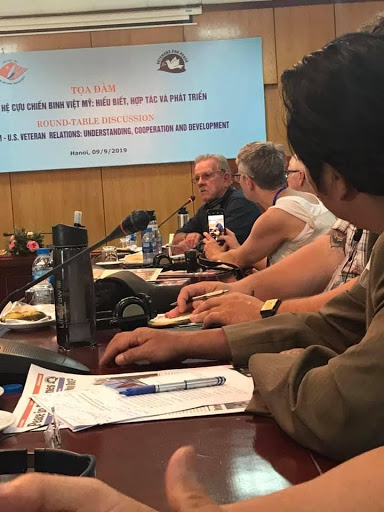Let's Talk Human Rights

Visiting the Traumatic Legacies of War
By Benjamin Schrader
In September, I joined the organization Veterans for Peace for a 16-day tour of Vietnam. For some in the group, it was their first trip to Vietnam, for others it was their first time back since they fought in the war, and a few had been back many times since the war. The trip primarily consisted of military veterans from different eras and three civilians. We started the journey up North in Hanoi and finished in the South in Ho Chi Minh City. Along the way, we visited agencies dealing with the effects of Agent Orange, unexploded ordnance, and Vietnamese veteran organizations.
Agent Orange
From 1961-1975, the US military sprayed over 20 million gallons of toxic chemicals across Vietnam to clear foliage around bases and along military routes, in order to enable longer lines of sight to better maintain security. The effects of that spraying have been long-lasting on both the Vietnamese and US veterans and their children.
While the US Veterans Administration has slowly recognized these effects on veterans and their families since the 90’s, there is still little acknowledgement of the negative health effects on the Vietnamese. More than a million Vietnamese people have died because of Agent Orange poisoning since the end of the war, and there are currently more than three million Vietnamese people who require daily support as a result of the poisoning.
On this trip we visited a number of orphanages and hospitals that take care of children born with complications due to Agent Orange, and we met with doctors and organizations that treat and advocate for the victims. H.R. 326 the Victims of Agent Orange Relief Act of 2019 requires the provision of medical and disability services to affected American veterans, Vietnamese, and their offspring; restoration of land and ecosystems contaminated by Agent Orange; and conducting research on the health effects of Agent Orange. You can fill out a digital postcard to urge your congress person to support the Act, by clicking here.

Playing games with kids affected by Agent Orange at the Lang Hoa Binh Peace Village hospital in Ho Chi Minh City (photo credit: Benjamin Schrader)
Unexploded Ordnance
During the war, the US dropped over 8 million tons of munitions across Vietnam and an additional 2.5 million tons into neighboring Laos. It is estimated that 10% of those munitions failed to detonate upon impact, leaving many bombs spread throughout the country. Many of these were cluster bombs, composed of a large shell which when dropped spreads into small anti-personnel mini-bombs about the size of a baseball. Unexploded cluster bombs look like toys, so when children pick them up they are often badly harmed or killed.
Since the end of the war, there have been more than 100,000 injuries and fatalities from these munitions. We visited Project RENEW which is addressing this issue on multiple fronts. We first went to a field site where an all-female clearance team swept a field for unexploded ordnance. The all-female team is an initiative by Project RENEW to dispel stereotypes that bomb clearance is a job only for men. In addition, Project RENEW is educating people about what to do when they come across these bombs. Project RENEW’s mission is to enable the community to lead the work, which means that people are being trained and can then train and help others, with a view of transferring the skills and activities to other parts of the country.
 The all-female bomb clearance team from Project RENEW. (Photo credit: Benjamin Schrader)
The all-female bomb clearance team from Project RENEW. (Photo credit: Benjamin Schrader)
Vietnamese Veterans Organizations
The meetings we had with Vietnamese Veterans Organizations were mostly formal and ceremonial. While they all fall under one large organization known as the Vietnam Veterans Association, each city has its own chapter which does outreach work for its members. They service over 3 million veterans, covering those who fought the US, China, and Cambodia. The services they provide include: missing in action recovery, Agent Orange relief, business training, and providing medical supplies like wheelchairs.
After the initial ceremonial greetings finished, we would open up to discussion. A couple of times in the open discussion a member of the delegation would apologize for their participation in the war, which often times was dismissed as the Vietnamese understood that it was not their fault, that they were serving their country and that it was the policymakers who were to blame. It often ended with many hugs, handshakes, and pictures. Many of these veterans are governmental officials now, so in many ways this was a form of public diplomacy, which was discussed within the meetings, as they hoped we could bring more industry and tourism to Vietnam, but also so that we could raise awareness around the lasting effects of the war to try and get reparations.
 UD Alum and funder of the Vietnam Legacies Project, John C. Meager (UD, ’63), speaks to the Hanoi Vietnamese Veterans Association (Photo credit: Ushi Clark)
UD Alum and funder of the Vietnam Legacies Project, John C. Meager (UD, ’63), speaks to the Hanoi Vietnamese Veterans Association (Photo credit: Ushi Clark)
Closing Thoughts
This is just a brief overview of the trip and some of the information that will make up my research contribution to the Vietnam Legacies Project. While I will be analyzing this data over the next few months, I hope that my work will help to better understand the long-lasting effects of the Vietnam War, and how to implement healing processes. I believe this is critical as we look to reconciliation in relation to my generations’ wars, namely Afghanistan and the Iraq War in which I served from ’04-’05. As a participant on the Vets for Peace trip, Paul Cox stated when asked why he keeps returning to Vietnam, “I’m trying to repay the interest on debt that I can never repay.”
Additional Resources
Agent Orange
Vietnam Agent Orange Relief and Responsibility Campaign
Vietnam Friendship Village Project USA
Danang Center supporting for Agent Orange victims
Lang Hoa Binh Peace Village hospital in Ho Chi Minh City
Unexploded Ordnance
Extensive Article on Project RENEW
Media coverage of our trip
http://heartsforhue.org/veterans-for-peace-visting-trip-2019/
http://vietnamfriendship.vn/A-veterans-courage-to-resist-01-27549.html
Dr. Benjamin Schrader is a project researcher for the Human Rights Center. Ben is a war veteran-turned peace activist-turned academic. He has a PhD in Political Science from the University of Hawaii at Manoa, and holds degrees from Colorado State University. His work is at the intersection of political theory, international relations, American politics, critical military studies, social movements, and identity politics.
